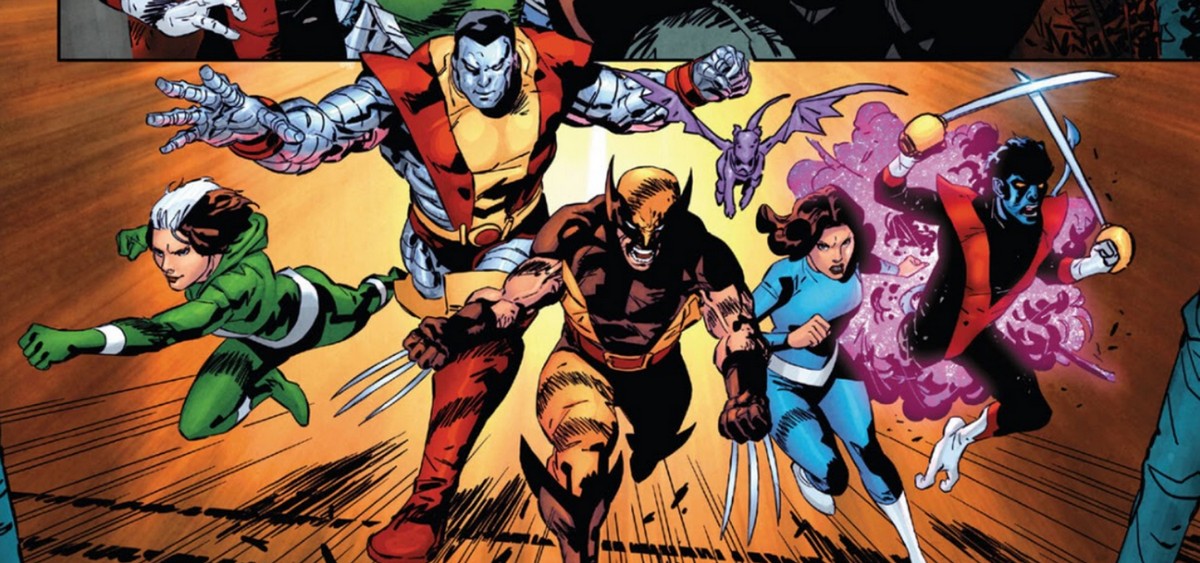Interview with Geraldo Borges: From Manicomics to ‘Storm’

Borges’s odyssey into the world of comics began against the backdrop of a successful career in Civil Engineering, a field he dedicated eight years to. In 1996, alongside JJ Marreiro and Daniel Brandão, he birthed the legendary fanzine ‘Manicomics.’ This fanzine became a cornerstone of Brazilian comics culture, captivating enthusiasts until its regular publication ceased in 2000.
Transitioning from the world of fanzines and independent comics, Borges made his mark on the North American comics landscape in 2007 when he joined forces with the esteemed DC Comics, working on Superman, Batman, Wonder Woman, and Aquaman. With a decade of astounding contributions to DC Comics behind him, 2018 marked a new chapter in his illustrious career as he joined the ranks of Marvel, tasked with bringing the X-Men to life through his artistry. Most recently, Borges helped bring one of the most popular X-Men members in the team’s history to life, and we used the opportunity to discuss it with him. Here’s What he had to say.
Comic Basics: Can you share your journey into the world of comic art, from your early days working on Brazilian fanzines to your current work with major US publishers like Marvel? How did that happen?
Geraldo Borges: I was born in Fortaleza, a city in the Northeast of Brazil, very far from big cities like São Paulo. So, comic book artist as a way of living was an impossible dream. But in 1997, I got my first professional job, working a local comic book called Capitão Rapadura with two friends at the same time; we did ‘Manicomics,’ a fanzine where we tried a lot of things about narrative style and learned the basics of how to do comics.
Unfortunately, in 2000, both projects ended, and I had to start working as an Engineer. Many years later, I decided to try again, and, in a very condensed way, I contacted an agency. They started to represent me, and I got my first job in the US in 2006 for Top Cow. Years later, I did Nova for Marvel and Wonder Woman for DC.

What is your favorite Marvel project that you’ve worked on so far?
A Wolverine annual. He is my wife´s favorite comic book character 🙂
In your opinion, what sets ‘Storm’ apart from other superhero comics, and what drew you to collaborate on this project?
Storm is part of the diversity of X-Men: If you get the original group, all white American guys, and when Chirs Claremont and Dave Cockrum decided to create a new team, we had more women, including Storm, a black one, and more nationalities.
The reasons why I decided to accept this job were 2: 1) the chance of working with this particular X-team (Storm minisseries is a retcon that happened in the 80s), and 2) Ann Nocenti is the writer.
How did you create the visual style for ‘Storm,’ and were there any specific artistic
influences that inspired your work on this series? The first two issues were drawn by a different artist. If I’m not mistaken, was the transition difficult?
I´m not asked to change my style, but my personal choice was following the style of the time that inspired us: Paul Smith, John Romita Jr., and a little bit of John Byrne guided me. And yes, I did the three last issues, and a different artist drew the first two. The way I draw is not similar to his style, so I need to thank Dalhouse, the colorist responsible for keeping the artistic unity of the book.

The art in ‘Storm’ has been described as having an ’80s/’90s-inspired style. Was that something you inherited from the previous artist or your idea?
Actually, our story is a retcon from the 80s, so it was natural to be inspired by the artists of that time I mentioned before.
Are there specific moments or scenes in ‘Storm’ that you consider your favorites?
Yes, all the scenes I had the chance to draw in the entire X-Men book were my favorite ones. As a reader, these guys are my first X-Men, so It’s too crazy now being responsible for the art duties.
‘Storm #3’ has both strengths and criticisms. How do you handle feedback and criticism as an artist, and how does it influence your future work?
Starting to work in the middle of the book is always a challenge, and fighting to the deadlines is always a challenge too, but I´ve been trying to do my best in every comic book issue as an artist. I don´t do a book exclusively for myself, but for the readers too, so I like to read the good (and bad) feedback and use it to become a better artist. I don’t like to be in a comfort zone, artistically speaking.
Do you have any upcoming projects that you can talk about? What can fans expect?
Besides Storm, I´ve been doing my creator-owned book, ‘NO/ONE,’ for Image, with my friends Kyle Higgins and Brian Bucellatto, and another creator-owned book, ‘THE LAST DETECTIVE: REDEMPTION,’ with my friend Claudio Alvarez, will be released by Opus Publishing this NYCC, in October.
And I´m the regular artist of ‘Thunderbolts’ for Marvel, with #1 out this December. There are some unannounced projects that I can´t mention at this moment, but I can´t wait to share the news 🙂
Liked this article? Follow us on Facebook, Threads, and X to stay updated with the latest news.

